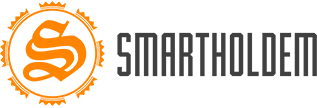The global Nutraceutical Excipients Market is poised for remarkable growth in the coming years, driven by rising consumer awareness about health and wellness, rapid advancements in drug delivery technologies, and increasing demand for functional foods and dietary supplements. According to the latest report by Kings Research, the global nutraceutical excipients market size was valued at USD 4.61 billion in 2024 and is projected to grow from USD 4.91 billion in 2025 to USD 8.07 billion by 2032, exhibiting a CAGR of 7.13% during the forecast period.
This steady growth highlights the pivotal role excipients play in the formulation of nutraceutical products, especially in enhancing their stability, bioavailability, and shelf life.
Nutraceutical excipients are inactive substances that serve as the vehicle or medium for an active ingredient in nutraceutical formulations. They help in ensuring consistency, taste masking, flowability, and extended stability of end products such as tablets, capsules, powders, and functional foods. With the global dietary supplement and functional food industry on a rapid growth trajectory, the demand for high-quality and multifunctional excipients is expected to increase significantly.
Market Overview
The nutraceutical excipients market has gained substantial traction due to the convergence of the pharmaceutical and food industries. Consumers are increasingly turning to nutraceuticals for preventive health care, thereby creating a robust demand for innovative and effective formulations. This shift is compelling manufacturers to adopt advanced excipients that not only stabilize active ingredients but also enable innovative delivery systems like chewable tablets, gummies, soft gels, and effervescent powders.
Moreover, the rise in chronic lifestyle-related diseases such as obesity, diabetes, cardiovascular disorders, and digestive health issues is encouraging people to adopt functional supplements as part of their daily routines. Nutraceutical excipients are thus becoming essential components in ensuring consistent efficacy and quality across products.
Key Trends Shaping the Market
One of the most significant trends shaping the nutraceutical excipients market is the growing preference for clean-label and natural ingredients. Manufacturers are moving away from synthetic excipients and exploring plant-based, organic, and allergen-free alternatives to cater to increasingly conscious consumers. This trend has given rise to excipients derived from starch, cellulose, rice protein, and other natural sources, which are seeing increasing adoption in supplement and functional food formulations.
Another key trend is the adoption of novel drug delivery systems. As consumers seek convenience and enhanced absorption of nutrients, manufacturers are turning toward innovative formats such as orally dissolving films, effervescent tablets, and time-release capsules. These formulations require highly specialized excipients that can control release kinetics, improve palatability, and maintain product integrity under diverse storage conditions.
Personalized nutrition is also emerging as a crucial driver of innovation. Companies are tailoring supplement solutions based on age, gender, lifestyle, and health goals, thus requiring precise excipient combinations that can meet a variety of formulation demands. This trend is likely to drive the demand for multifunctional and adaptable excipient systems.
Market Dynamics
The increasing popularity of preventive healthcare and wellness supplements is a key driver of the nutraceutical excipients market. Consumers worldwide are becoming proactive about their health, especially after the COVID-19 pandemic, which accelerated demand for immunity-boosting and health-maintenance supplements. As more people opt for daily dietary supplements, there is a rising need for excipients that enhance bioavailability, taste, texture, and shelf life.
However, the market is not without its challenges. One significant restraint is the stringent regulatory framework around excipient approval. Different regions have different rules governing what is permissible in food-grade and nutraceutical applications, making compliance complex for global players. Additionally, excipients derived from synthetic or genetically modified sources may face pushback from both regulators and consumers, requiring manufacturers to constantly adapt their sourcing and production processes.
Despite these challenges, the market presents lucrative opportunities through technological advancements. The rise of 3D printing in nutraceuticals, encapsulation technologies, and microemulsion-based delivery systems is opening up new frontiers for excipient innovation. Companies investing in R&D to develop multi-functional excipients that improve solubility, enhance flavor masking, and reduce tablet size are likely to gain a competitive edge.
Market Segmentation
The nutraceutical excipients market is segmented based on product type, functionality, form, and application.
By Product Type:
Binders (e.g., cellulose derivatives, starch)
Fillers & Diluents (e.g., lactose, mannitol)
Coating Agents (e.g., polymers, shellac)
Disintegrants (e.g., sodium starch glycolate)
Flavoring Agents (e.g., sucralose, maltol)
Lubricants and Glidants (e.g., magnesium stearate, silicon dioxide)
Among these, binders and fillers hold the largest market share due to their wide use in tablet and capsule formulations. However, disintegrants are witnessing rapid growth owing to increasing demand for fast-dissolving tablets.
By Functionality:
Flavor Masking
Flow Enhancers
Stabilizers
Preservatives
Coating Materials
Flavor masking and stabilizing agents are especially important in children's health supplements and plant-based protein formulations, which often have strong or undesirable tastes.
By Form:
Dry Excipients
Liquid Excipients
Dry excipients dominate the market due to their compatibility with powder, capsule, and tablet formulations. However, liquid excipients are gaining popularity for their use in syrups and emulsions.
By Application:
Functional Food & Beverages
Dietary Supplements
Personalized Nutrition
Dietary supplements represent the largest application segment, accounting for the lion’s share of excipient use. Meanwhile, functional beverages and personalized nutrition segments are projected to witness strong growth through 2032.
Competitive Landscape
The nutraceutical excipients market is moderately fragmented with several global and regional players competing on innovation, functionality, and pricing. Leading players are focusing on strategic collaborations, acquisitions, and new product launches to strengthen their market presence.
Key players profiled by Kings Research include:
DuPont de Nemours, Inc.
Kerry Group
Ingredion Incorporated
Roquette Frères
BASF SE
Evonik Industries AG
Ashland Inc.
JRS Pharma GmbH & Co. KG
Cargill, Incorporated
Sensient Technologies Corporation
These companies are investing significantly in R&D and developing clean-label excipients that are both effective and compliant with global safety standards. For example, Roquette has launched several plant-based excipient solutions for use in both dietary supplements and functional foods. BASF, on the other hand, is focusing on solubility-enhancing technologies to improve the bioavailability of active ingredients.
Recent Developments
Recent developments in the nutraceutical excipients market include collaborations between ingredient manufacturers and formulation companies to co-develop next-gen delivery systems. Additionally, several companies are enhancing their product portfolios with excipients that align with trends like veganism, allergen-free labeling, and organic certification.
In 2024, DuPont announced a breakthrough in probiotic delivery excipients, enhancing shelf life and survivability of live cultures. Similarly, Kerry Group expanded its production facilities in North America to cater to the growing demand for its taste-masking and stabilization excipient solutions.
M&A activities are also shaping the market. In late 2023, Ingredion acquired a natural starch-based excipient line from a smaller biotech firm to strengthen its clean-label offerings. These developments signal growing consolidation and investment in this space.
Regional Analysis
North America
North America dominates the global nutraceutical excipients market, driven by high consumer spending on health and wellness, a mature dietary supplements market, and strong regulatory oversight from bodies such as the FDA. The U.S. accounts for the majority of regional revenue, with companies focusing on innovation and compliance with clean-label standards.
Europe
Europe is a significant market due to growing health consciousness, aging population, and regulatory encouragement for preventive healthcare. Countries like Germany, France, and the U.K. are seeing increased demand for functional food products, thereby boosting excipient usage.
Asia-Pacific
The Asia-Pacific region is expected to witness the highest growth rate during the forecast period, fueled by expanding middle-class populations, increasing urbanization, and government initiatives promoting nutraceutical use. China, India, and Japan are emerging as key markets, with domestic companies increasingly adopting international excipient quality standards.
Latin America and MEA
While these regions currently hold smaller market shares, they offer promising growth potential due to rising disposable incomes, improving healthcare awareness, and the influx of international supplement brands into these markets.
Future Outlook
The future of the nutraceutical excipients market looks highly promising. As the line between food and medicine continues to blur, the role of excipients in ensuring safety, efficacy, and consumer acceptance will become increasingly critical. Technological advancements, combined with a shift toward natural and personalized health solutions, are expected to drive the evolution of excipient offerings.
Kings Research predicts that innovation, sustainability, and regulatory compliance will define the competitive landscape over the next decade. Companies that can offer clean-label, multifunctional, and customizable excipient systems are likely to dominate the market.
Furthermore, the integration of AI and data analytics in R&D could revolutionize how excipient formulations are designed, enabling faster innovation cycles and improved compatibility with nutraceutical actives.
Get Full Detailed PDF Report- https://www.kingsresearch.com/nutraceutical-excipients-market-2646
Conclusion
The Nutraceutical Excipients Market is experiencing a transformational phase driven by consumer-centric innovation, technological advancements, and the global pursuit of preventive health solutions. With strong growth projected through 2032, stakeholders in this market—including ingredient suppliers, formulators, and brand owners—must focus on developing adaptable, compliant, and high-performance excipients to stay competitive. According to Kings Research, the market’s future is not just about volume but about delivering value-added solutions that align with consumer preferences, global regulations, and sustainability goals.
Browse To Related Article-
Crosslog, MeCompany Partner on SCUEL Healthcare Data
Axcelead, A2 Healthcare Unite for Pharma R&D in Japan
Innovaccer & AMGA Partner to Advance U.S. Healthcare
Komodo Health & Anervea.ai Partner to Advance Healthcare AI

